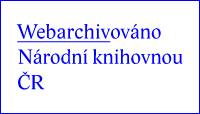The review process
A review process is a process of the professional critical review of scientific papers before they are published, which ensures the quality of the professional texts in the main, peer-reviewed part of the journal Knihovna – knihovnická revue [Library – A Library Journal]. The peer-reviewed section publishes original scientific papers and papers based on scientific research. Whether individual texts are accepted for the review process or rejected is decided on by the editorial board.
A particular text submitted for publishing in the peer-reviewed part of the Library – A Library Journal is sent for review to at least two independent reviewers unless rejected by the editorial staff for the serious reasons listed below. In this process, the editorial staff ensures the mutual anonymity of the authors and reviewers.
A text meeting the formal requirements is assigned to the reviewers by the executive editor based on the focus of the article and the recommendations of the editorial board. The reviewers are neither members of the editorial team noremployees at the same workplace as the author or any of the reviewers. The reviewers may only be experts with an academic-scientific degree.
The editors have the right to refuse to assign the article for review if they are of the opinion that it does not meet the basic requirements for a professional text. They must justify this decision to the editorial board. The members of the editorial board are entitled any time to inspect the manuscripts submitted to the editorial staff including those rejected by the editors.
A reason for a rejection of a text submitted for a review process may be gross violation of formal requirements, breach of the ethics of scientific work(plagiarism), inadequate length, content not related to the focus of the journal, low or zero topicality, or the absence of obligatory information. If a text is rejected, its author is informed by the executive editor. The editors may also return the article to the author if it is too long (see the Instructions for the or too short.
The result of the review process is based on the reviews (in both electronic and printed form), which are sent to the author. The result may be:
- publication recommendation;
- publication recommendation after changes have been made (a request for a revision) – before publication, the text is returned to the author for him/her to make changes in the extent corresponding to the reviewers’ requirements;
- publication refusal – the author is informed about the refusal and the reasons for it that make the publication of the given or a very similar text in the peer-reviewed part of the journal impossible.
If the review is negative, the author may suggest that his/her text be moved to another column of the journal (i.e. a non-reviewed part) provided that the formal requirements are met. The proposal must be approved by the editorial board.
The editorial staff may recommend that the author (before the article is sent for review) make language, formal and content changes. If the author of the article refuses to make these changes, the editors may reject the article or send it for review.
Once an article has been reworked or complemented, the editors first decide whether the text has been rewritten enough and whether the changes are sufficient. If not, they may reject the article or send it to be reworked. If the problems found during the review process have been removed, the editors send the article for approval to the editorial board.
The articles that are reviewed again may be evaluated by the same reviewers or one of the reviewers may be replaced with a new one.
If the author of the article does not consider the objections of the reviewers as justified and correct, he/she may send his/her opinion in writing to the address of the executive editor. The members of the editorial board will be acquainted with the content of this letter.
The final decision on the acceptance or rejection of a particular article will be made by the chairperson of the editorial board/editor-in-chief after consulting it with the editorial board.
The review process takes at least four weeks. This period begins once the executive editor has sent the version of the article to be reviewed to a reviewer. The editors, however, are not responsible for a delay caused by the reviewers.









